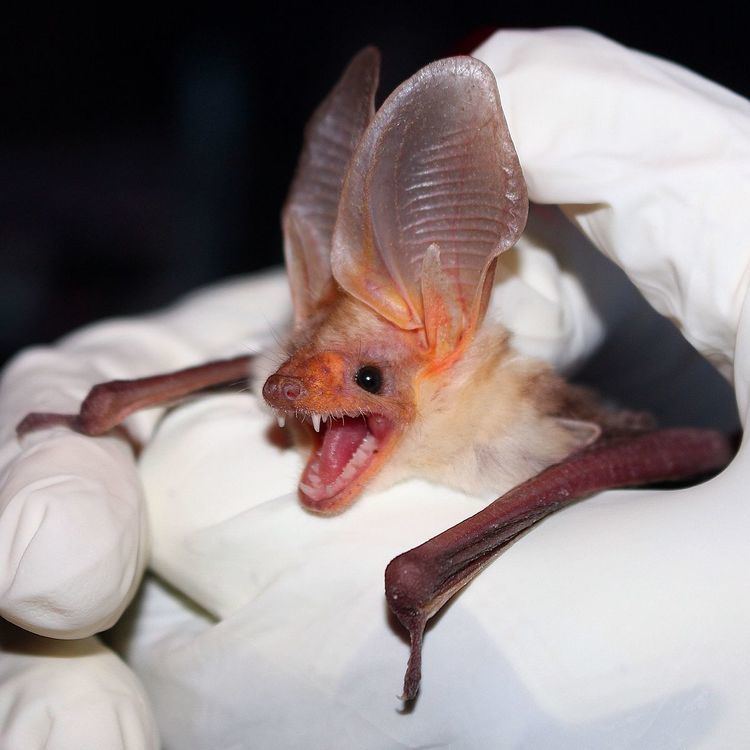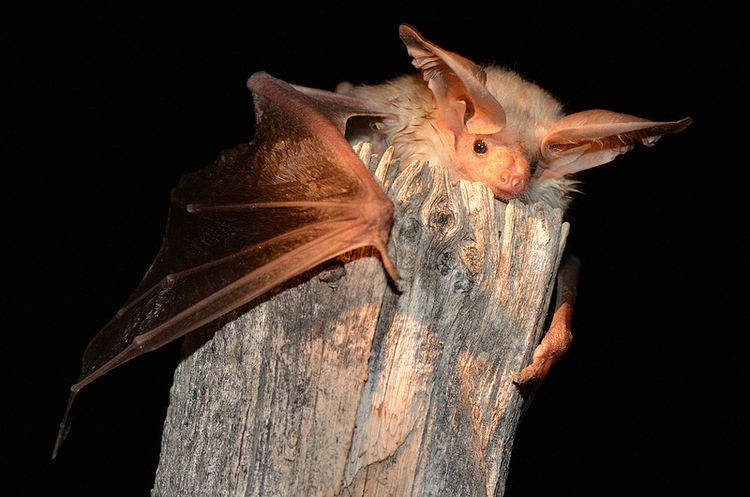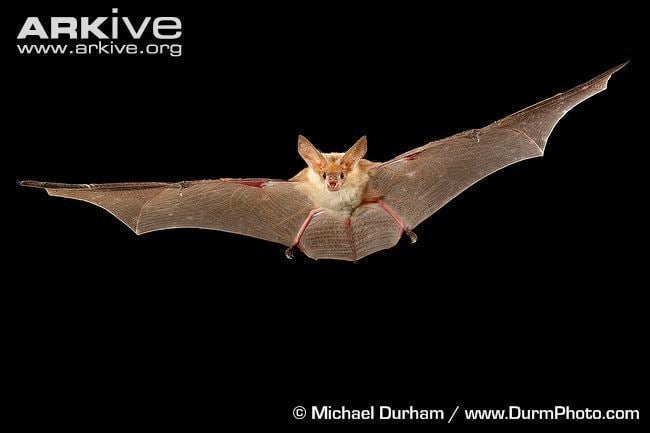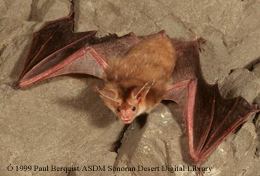Order Chiroptera Scientific name Antrozous pallidus Higher classification Antrozous | Phylum Chordata Family Vespertilionidae Rank Species | |
 | ||
Similar Van Gelder's bat, Townsend's big‑eared bat, Western pipistrelle, Spotted bat, Big brown bat | ||
Pallid bat feeding antrozous pallidus
The pallid bat (Antrozous pallidus) is a species of bat that ranges from western Canada to central Mexico. It is the sole species of its genus and is closely related to Van Gelder's bat (Bauerus dubiaquercus), which is sometimes included in Antrozous. Although it has in the past been placed in its own subfamily (Antrozoinae) or even family (Antrozoidae), it is now considered part of the subfamily Vespertilioninae and the tribe Antrozoini.
Contents
- Pallid bat feeding antrozous pallidus
- Texas wild style up close and personal with the pallid bat
- Description
- Ecology
- Behavior and natural history
- References

Texas wild style up close and personal with the pallid bat
Description

Pallid bats have a head and body length of approximately 2.75 inches (6.2-7.9 cm), a tail of approximately 1.75 inches (3.9-4.9 cm), and a wingspan of 15-16 inches (38–40 cm). They weigh 14-25 grams. These bats are large, with long forward pointing ears (over 2.5 cm). Fur is pale at the roots, brown on their back, with a light underside. Pallid bats have a blunt piglike snout.
Ecology
Pallid bats are typically found in arid or semi-arid habitats, often in mountainous or rocky areas near water. They are also found over open, sparsely vegetated grasslands. During the day time, pallid bats typically roost in cracks and crevices, which may include tile roofs, exfoliating bark of trees, or rocky outcrops. During the night, this species will often use a night roost that is closer to their foraging grounds than their day roost. A night roost is usually less protected than a day roost; open porches may be used as night roosts by this species. In the winter time, this species may dip into shallow bouts of torpor, often in buildings, caves, or cracks in rocks.

Pallid bats are insectivores that feed on arthropods such as crickets, and are capable of consuming up to half their weight in insect every night. Pallid bats are gleaners, capturing prey from the ground and transporting it to their night roost for consumption. When foraging, pallid bats typically fly at low heights of 1–2 m off the ground.
Pallid bats are a unique bat species because they are heterothermic, meaning they can be either poikilothermic or homoeothermic depending on the time of year. They have the ability to control their body temperature and equilibrate it with the environment during winter hibernation and whenever they rest.
Behavior and natural history
The mating season ranges from October to February. The female bat gives birth to one or two pups during early June; they weigh about 3 to 3.5 g (0.11 to 0.12 oz) at birth and in four or five weeks are capable of making short flights. They do not attain adult size until about eight weeks of age, and do not become sexually mature until after around two years.
Like the majority of bat species, pallid bats are capable of using echolocation while foraging and traveling from their roost sites to foraging grounds. However, they may also opt to not echolocate while foraging, and instead use their large ears to locate insects on the ground. This species is sensitive to noise disturbance when roosting.
